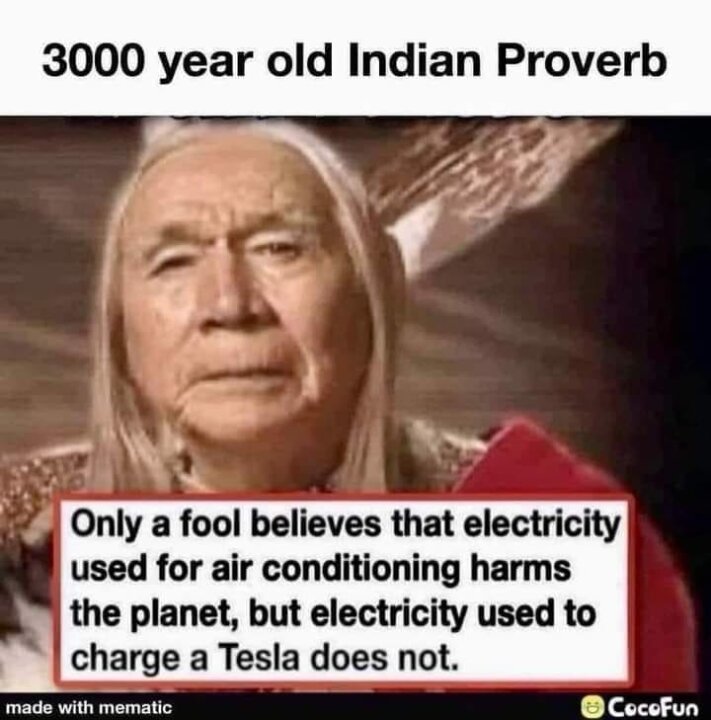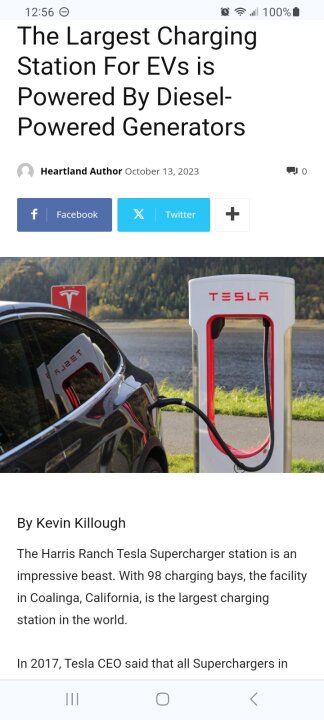This page is a permanent link to the reply below and its nested replies. See all post replies »

SW-User
@NativePortlander1970
Clickbait. This is simply a regurgitated story from 2015 involving the test battery swap site.
Here are the only bits of note:
The origin of the above clickbait article was about this 2015 Battery Swap Harris Ranch previous article:
The news was first broken by investigative journalist Edward Niedermeyer.
In May 2015, Niedermeyer drove from his Oregon home to Harris Ranch to see whether
“Musk’s latest bit of dream weaving could stand up to reality.”
So, in other words, blatantly misleading.
Clickbait. This is simply a regurgitated story from 2015 involving the test battery swap site.
Here are the only bits of note:
While at Harris Ranch, SFGATE tried, unsuccessfully, to use the TezLab app,
which tracks energy sources used by Tesla Superchargers.
So SFGATE reached out to TezLab directly to see whether it’s able to track the amount of
diesel, coal or other “nonrenewable” fuels that go into the mix at the Harris Ranch Supercharger.
TezLab spokesperson Ben Perlman emailed SFGATE on Friday to clarify
how Tesla’s energy is used at places like the Harris Ranch Supercharger.
“All electricity is created and used instantly by the mix of sources that are attached to the grid,” he wrote.
“The energy being used at the Harris Ranch supercharger is the same energy being used anywhere within CalISO’s grid coverage.”
Perlman wrote that by TezLab’s calculations, “nearly all Superchargers, homes, businesses, etc, in California are using those same sources of energy, unless they have their own dedicated solar or theoretical energy contracts, because of how grids work it’s not really feasible to look at one charger and say, ‘Oh, I’d rather drive another 5 minutes to this one that uses a cleaner source of energy’ since they are very likely on the same grid.”
which tracks energy sources used by Tesla Superchargers.
So SFGATE reached out to TezLab directly to see whether it’s able to track the amount of
diesel, coal or other “nonrenewable” fuels that go into the mix at the Harris Ranch Supercharger.
TezLab spokesperson Ben Perlman emailed SFGATE on Friday to clarify
how Tesla’s energy is used at places like the Harris Ranch Supercharger.
“All electricity is created and used instantly by the mix of sources that are attached to the grid,” he wrote.
“The energy being used at the Harris Ranch supercharger is the same energy being used anywhere within CalISO’s grid coverage.”
Perlman wrote that by TezLab’s calculations, “nearly all Superchargers, homes, businesses, etc, in California are using those same sources of energy, unless they have their own dedicated solar or theoretical energy contracts, because of how grids work it’s not really feasible to look at one charger and say, ‘Oh, I’d rather drive another 5 minutes to this one that uses a cleaner source of energy’ since they are very likely on the same grid.”
The origin of the above clickbait article was about this 2015 Battery Swap Harris Ranch previous article:
The news was first broken by investigative journalist Edward Niedermeyer.
In May 2015, Niedermeyer drove from his Oregon home to Harris Ranch to see whether
“Musk’s latest bit of dream weaving could stand up to reality.”
So, in other words, blatantly misleading.
@SW-User Here's the funny thing, I cannot find any verifiable credentials on either Perlman or Niedermeyer, which leads me to surmise neither are credible, despite being published, but that is common nowadays, fake activist journalism.






